Potatoes, curd cheese, fried cheese, utopenec (the ‘drowned man’) or goulash. Don't ring a bell? These are just a few rich Czech delicacies that delight the taste buds but leave you nice and full. When visiting Czechia, you can tuck into traditional Czech dishes in lots of places, from typical pubs to fancy Michelin-starred restaurants. Don't be afraid to experiment, although even here, a classic is a classic, after all. We present a selection of traditional delicacies that you’re likely to find on restaurant menus in Czechia.
Utopenec
Utopenec means a “drowned man”. Would you like some? In the Czech Republic, it is almost a must. It is available in every pub for the locals. It is a typical dish that is served with beer. But why the drowned man? The basis is a sausage made from pork, beef and lard. Cut the sausage, spread some mustard on it and pickle it in a mix of vinegar, spices and hot peppers.
Where to try it: Pivovar Řevnice, Friesovy boudy
Pickled Brie
Another representative of cold food that saves Czechs in the pub when the chef has already left but beer is still being drunk. Hermouš, as it is called in Czech pubs, is a mould cheese with spices and hot peppers pickled in sunflower oil. Let it ripen at room temperature for at least one week. The cheese must be soft and stretchy. Excellent delicacy.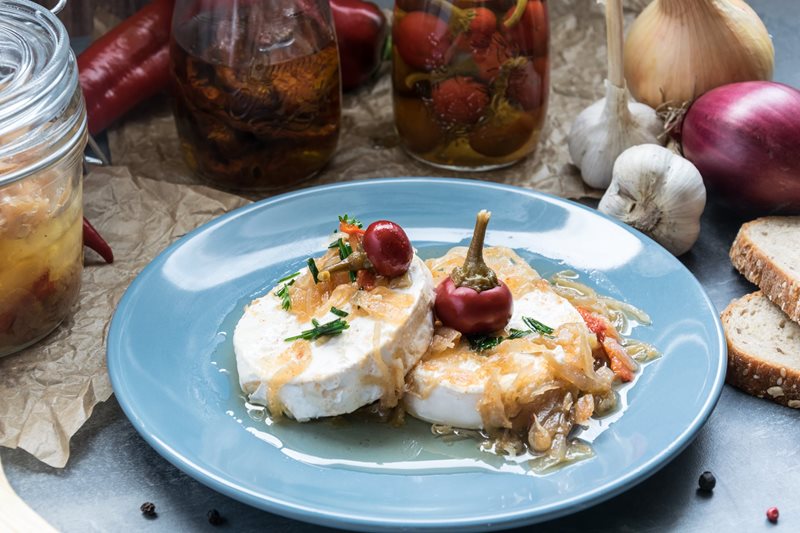
Where to try it: Friesovy boudy, Wellness hotel Národní dům Podbořany
Pickled tvarůžky
The last of the three pickled delicacies. Tvarůžky is a special cheese made in Moravia in the surroundings of Olomouc. The cheese is – euphemised – very aromatic. In a way that requires it to be stored in an airtight container in the fridge. Tvarůžky, just like Brie, is pickled in oil with a mix of spices and hot peppers. This food is only for the strong. Really.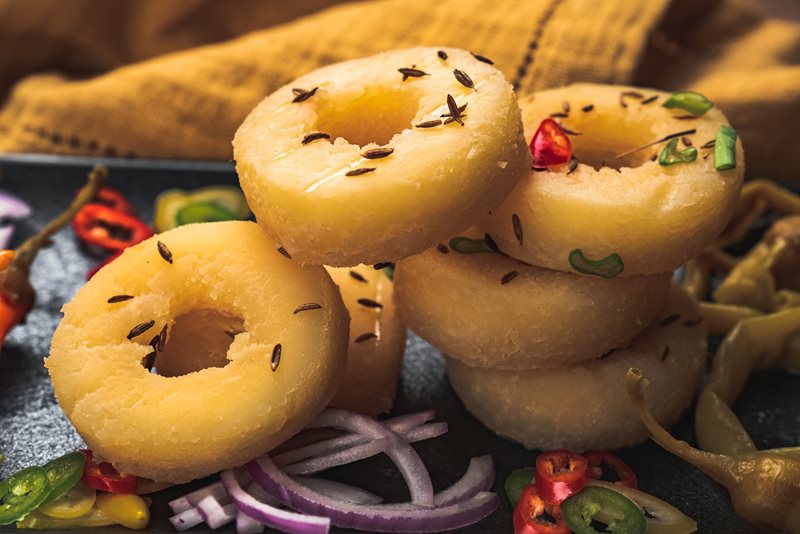
Where to try it: Pivovar Řevnice, Hodovna Hrad Vildštejn
Fried Cheese or smažák
Nutritionists shake their heads in disbelief. This is a huge amount of fat in all kinds of forms. It is a thick slice of fried cheese with 30 to 40 percent fat, covered with flour, egg and breadcrumbs. “Smažák” is a famous delicacy, so you can get it for lunch in even the most remote village pub. On the menu, it will probably be the only meatless dish. To avoid leaving the restaurant with gallbladder issues, we recommend ordering boiled potatoes with it. Avoid French fries. The cheese and potatoes are usually served with Tartar sauce, made from oil and egg yolk. The food is not photogenic but don’t worry, you will like it!
Where to try it: Restaurace Mlýnský domov, Pivovar Ossegg
Collared Pork and White Pudding
Collared pork and white pudding are typical dishes served at a pig-slaughter event. The Czech countryside still sees the live tradition of at home pig-slaughter in the winter months. It is a social event when the entire family and friends meet, the butcher kills the pig early in the morning and it is consumed from head to toe, literally, in a day. The white pudding, something like a sausage, contains the guts with the skin and the nose, the collared pork contains joints, meat and skin. Thanks to collagen and other ingredients that are not common in a modern European diet, some experts say that these are very healthy dishes. The decision is up to you. All the dishes above have to be washed down with, not only one, beer.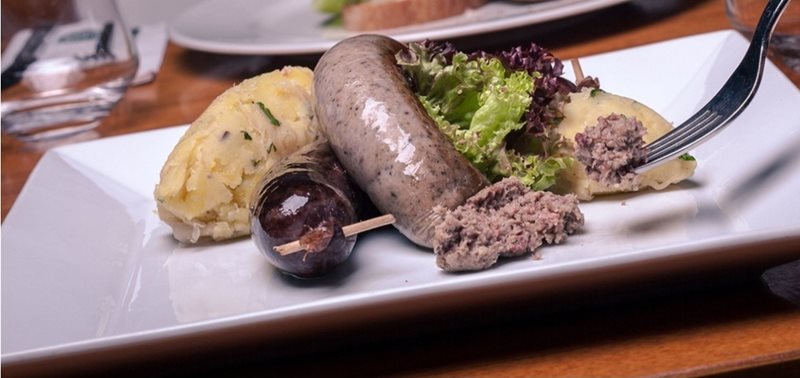
Where to go for traditional pig-slaughters and pig feasts:
U Klimešů, 17-18 FebruaryMlýnský domov Restaurant, 1 March
Pivovarský dům Benedict, until 14 February
Municipal House Beer Hall, 24 February, Pig-slaughter Feast in the Beer Hall
Goulash
Goulash is a traditional speciality, not only in Czechia, and you’ll find various versions of it all over the country. And what is it? Goulash is basically meat stewed in its own juice with onions. Our grandmothers used to say that it’s best the day after you cook it, when it’s sat for a good while and all the individual flavours are nicely blended. Goulash can be spicy, stewed or with sauerkraut, but it’s always beautifully juicy.And how to cook the typical Czech goulash? Well, it’s mostly onions, sweet or hot peppers and a choice of meat. Czech goulash is usually made with beef, although venison goulash is also a delicacy, and the mushroom version is sure to go down well with vegetarians. As a side dish, there are many types of dumplings to choose from, which we here in Czechia are experts at: soft bread ones, marbled Karlovy Vary dumplings or the dense potato types. You can also eat goulash with bread or speck.
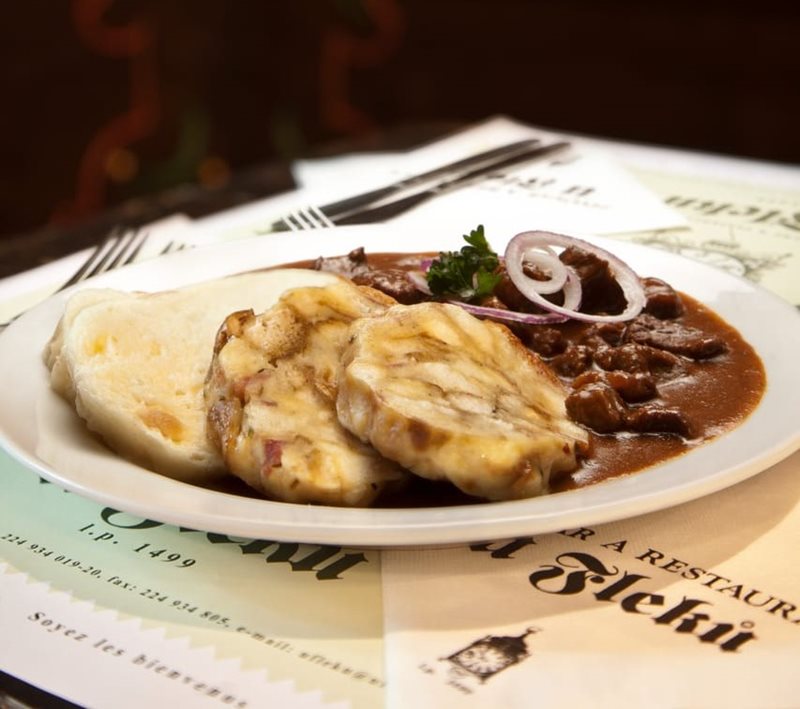
Where to try it: The U Sedlerů restaurant in Plzeň, Ossegg Brewery, Pivovarský dům Benedict, Kulaťák
Pork, dumplings and sauerkraut
With its tongue-twister name (vepřo-knedlo-zelo), this is one of the ultimate national classic dishes. Its strength makes it especially popular with men and will keep almost any starving guy quiet for a while. It’s said that the Czech pork, dumplings and sauerkraut dates back to the reign of Austrian Emperor Franz Josef, when a Prague restaurateur started putting this combination on the menu. The basis of the dish is roasted lean pork, but it can also be fattier. Dumplings play a starring role, basically chunks of steamed pastry soaked in the meat roast. And that should be blessed in this delicacy! It is a typical pub dish, best served with a cold glass of pilsner beer.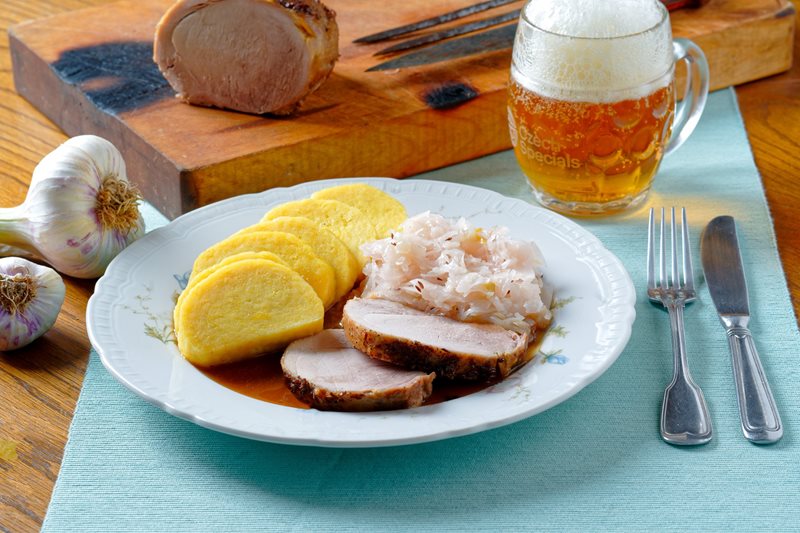
Where to try it: Stará Praha
Roasted pork knuckle
Countless Czech soup houses, pubs and restaurants serve roasted knuckle. Sometimes in black beer, but almost always with a chilled glass of the golden nectar. Roasted knee is usually served on a wooden board, with horseradish, mustard, pickled gherkins and a slice of aromatic bread. It's an ideal dish to share with others, as one knee with the bone can weigh up to 1.5 kg. Another real delicacy is smoked pork knee, with the meat fragrant from being smoked over beech coals.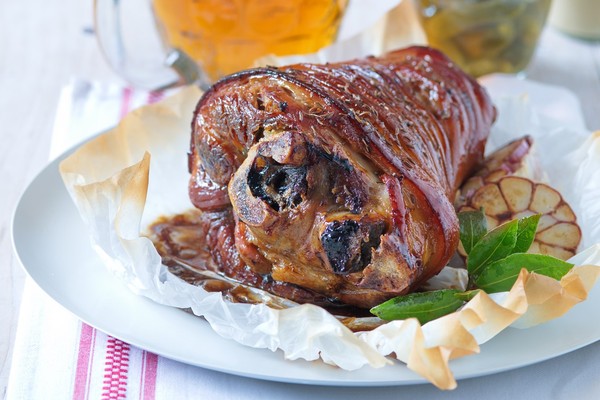
Where to tryit: The Municipal House Beer Hall, Malostranská beseda, Kulaťák
Potato pancakes
Crispy, golden and insanely aromatic! Potato pancakes are made from grated potatoes, which are fried in fat. You can eat them all year round, in a restaurant or at a stand in the park. It’s the ideal dish to just take away and munch on. Seasoned with nothing more than garlic and marjoram, they’re often served with sauerkraut, bacon or minced meat. You can sometimes experiment with a sweet version, but we definitely recommend starting off with the classic one: just a slightly salted fried potato pancake. Yum!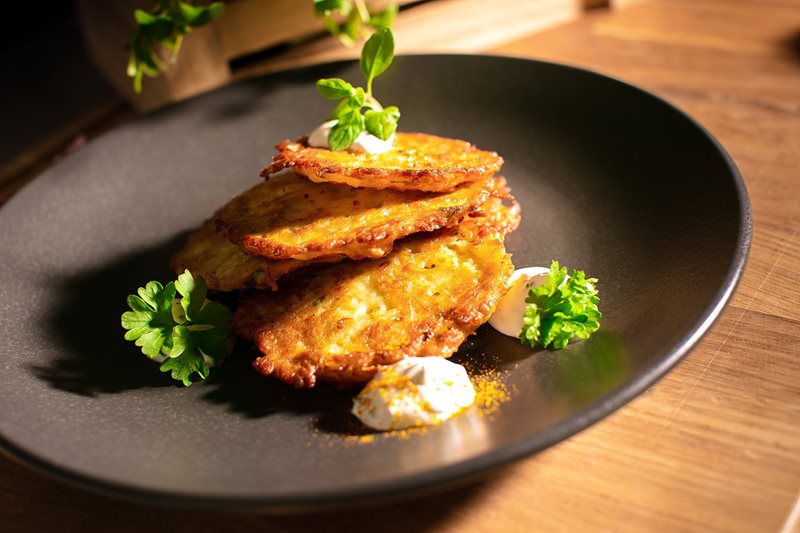
Where to try it: Brambory Na Pankráci










-(1).jpg?width=1920&height=1204&ext=.jpg)